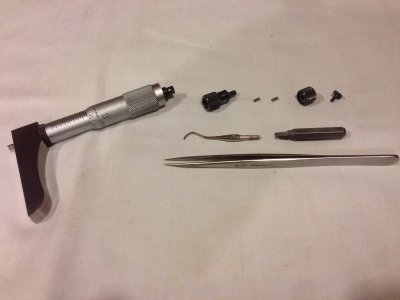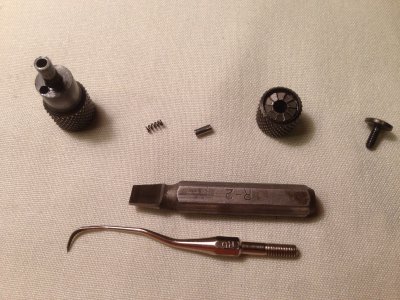- Joined
- Sep 5, 2013
- Messages
- 3,207
Hi guys.
Is there a way to adjust the ratchet stop tension on a Starrett mic? I just picked up a 449B depth mic at a local pawn shop and the ratchet tension feels overly tight to me. I know how to adjust for backlash and calibrate the rods but can't find anything on adjusting ratchet tension -- is it possible to do that or is that a factory preset that can't be tweaked?
Thanks for any help.
-frank
Is there a way to adjust the ratchet stop tension on a Starrett mic? I just picked up a 449B depth mic at a local pawn shop and the ratchet tension feels overly tight to me. I know how to adjust for backlash and calibrate the rods but can't find anything on adjusting ratchet tension -- is it possible to do that or is that a factory preset that can't be tweaked?
Thanks for any help.
-frank



